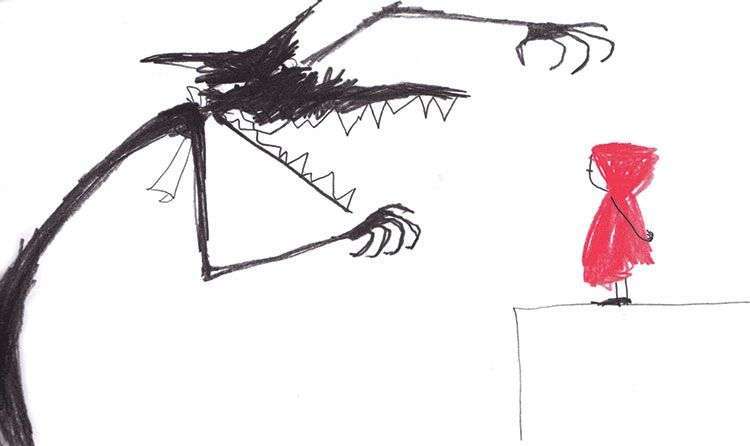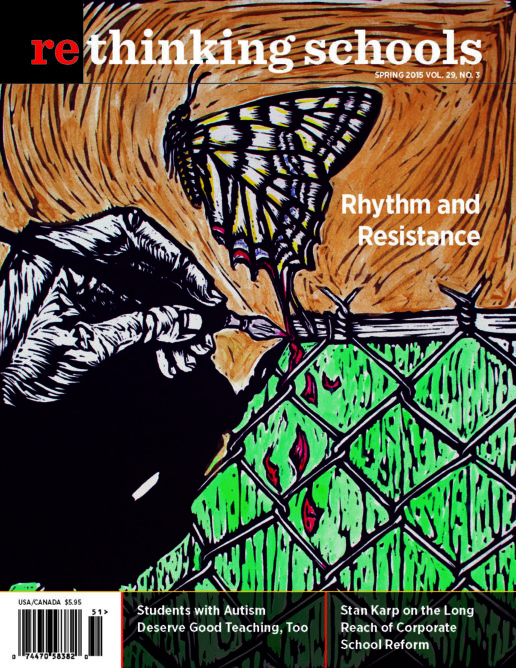Fairy Tales Retold

Written and illustrated by Marjolaine Leray
Translated from the French by Sarah Ardizzone
(Phoenix Yard Books, 2013)
Although many versions of “Little Red Riding Hood” exist, children’s picture book authors and illustrators most often reproduce a version of “Little Red Cap” drawn from the 19-century collections of the brothers Grimm. In this familiar variant, a woodsman slays the wolf to save a naive Little Red. Not so in Marjolaine Leray’s little red hood. In this small picture book, Leray provides a refreshing alternative: her Little Red Hood outwits the wolf.
Leray adopts a minimalist style and uses black, red, and white to illustrate the tale. On the front cover, the figure of Little Red Hood emerges out of a red crayon scribble as the heroine draws herself and her story into being. A playful dialogue between the wolf and Little Red Hood ensues as she challenges and outsmarts the wolf. In one image, she holds open the wolf’s mouth to examine his “seriously big teeth.” When the wolf says, “All the better to eat you with,” Little Red Hood responds, “No!” The wolf answers with a confused “No?” Then Little Red offers the wolf a sweet to combat his bad breath. The wolf accepts the candy, chokes, and dies. The final image in the book is Little Red Hood against a white background and a single word: “Fool!”
Some might find the violent conclusion disturbing; others will revel in its subversive humor. Either way, Leray’s book raises questions about why certain tales continue to be reproduced at the expense of others. Little red hood is part of a lesser-known group of variations in which the young girl outwits and kills the wolf. In an early oral version of the tale, “The Story of Grandmother,” a young girl escapes the wolf by claiming that she has to relieve herself outside, and the Grimms offer an alternative ending to “Little Red Cap” in which the grandmother and Little Red work together to trick and kill the wolf. Authors like James Thurber and Roald Dahl have penned versions of the tale in which Little Red is an active heroine rather than a victim.
Leray’s little red hood would make an excellent companion to Patricia McKissack and Rachel Isadora’s Flossie and the Fox and Ed Young’s award-winning Lon Po Po. Her little red hood challenges the gender lessons about girlhood and vulnerability in more familiar versions of “Little Red Riding Hood.” There is no mother to warn Little Red Hood to stay on the right path, so she is not punished for failing to heed her mother’s advice or for walking alone in a forest. She uses her smarts rather than her victim status to defeat the wolf. With little red hood, Leray invites us to think about the history of popular fairy tales and to take a critical perspective on the stories we thought we knew.

